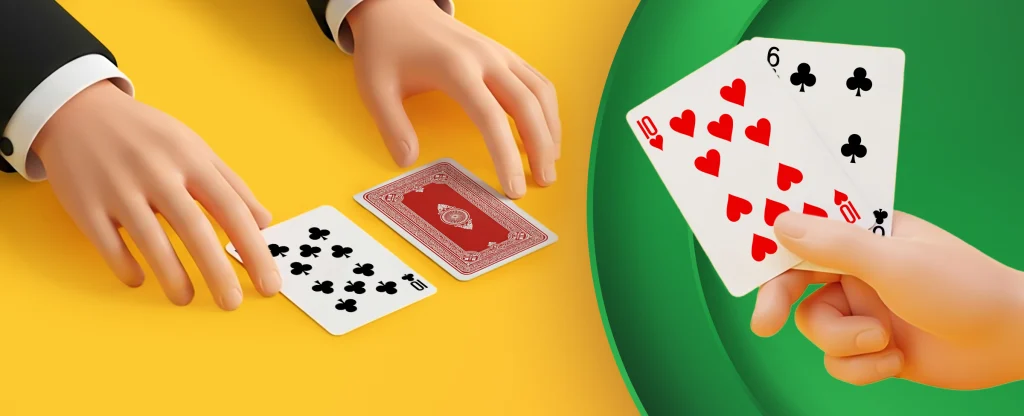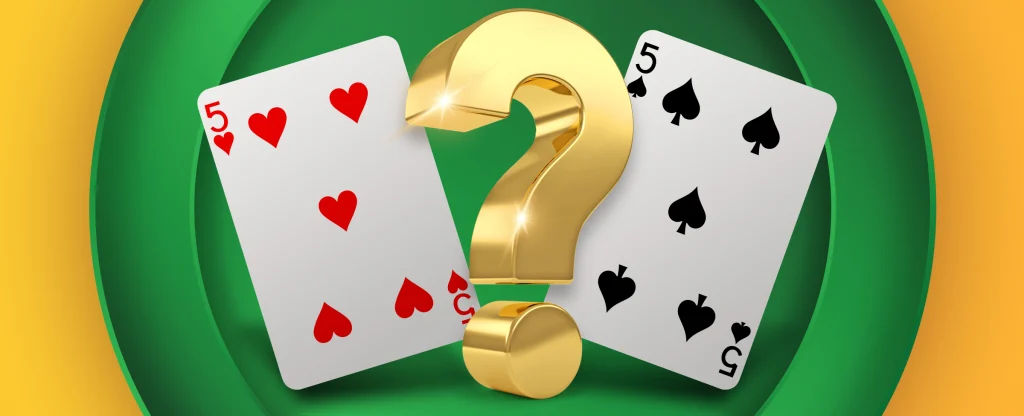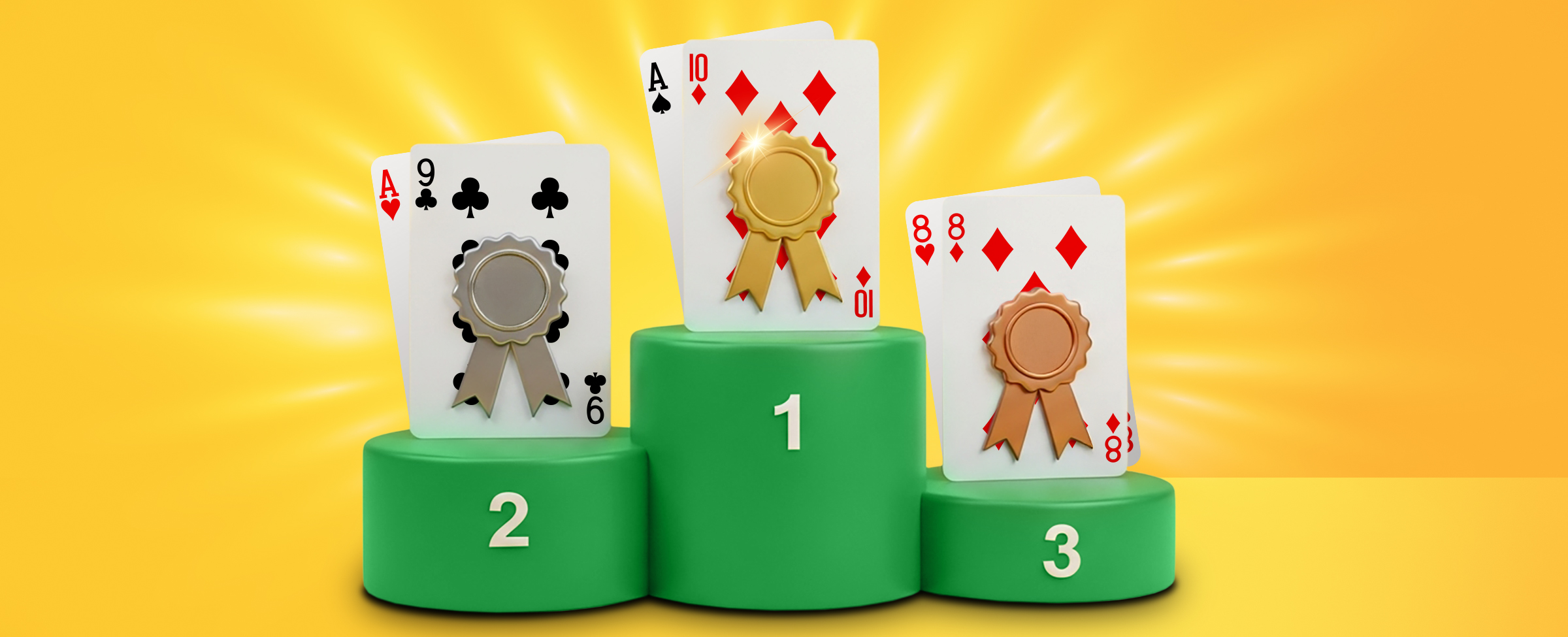One of the biggest edges a player can get in Blackjack is by knowing which cards (or hands) are potential winners and which are the troublemakers. Whether you’re playing a few hands at home, or at one of our online tables at Joe Fortune understanding the best and worst hands in blackjack is a big step toward winning more and losing less. In this guide, we’ll break down the hands you want to see, the ones you’ll dread, and what to do when you’re dealt a shocker.
The Best Hands
Let’s start with the good stuff here are the hands you want to be dealt every time you sit at the table. These are the hands that give you the best chance of winning (or at least not losing), whether you’re playing single-deck or an 8-deck game.
Blackjack (Ace + 10)
It goes without saying the natural blackjack is the best hand in the game. It’s made up of an Ace and any 10-point card (10, Jack, Queen, or King). This hand totals 21 with just two cards and beats all other hands except a dealer blackjack, which results in a push.
Why it’s the best:
- You usually get paid 3:2, meaning a $10 bet wins $15.
- It can’t be beaten, only matched so you can’t lose!
- You don’t have to play the hand; you win straight away unless the dealer matches you.
Soft 20 (Ace + 9)
This is a beauty of a hand as it’s strong and flexible. Because the Ace can count as either 1 or 11, you’re sitting at 20 but without the risk of busting if you hit (though you’d almost never do that).
Why it’s great:
- Nearly unbeatable unless the dealer hits blackjack or 21.
- You’ll stand on this every time, no decision-making and stress free.
Pair of 8s
Wait, what?… Yeah, you read that right, this hand might not look amazing at first (total of 16), but a pair of 8s is one of the best hands to be dealt because you can split it. That turns one weak hand into two chances at winning.
Why it’s better than it looks:
- 16 is a terrible total, but splitting gives you a shot at building two stronger hands.
- You’re reducing your risk and giving yourself more upside.
Pair of Aces
Another hand that you’ll always split because two Aces gives you two shots at hitting 21. You can’t play a single hand of 12 and expect to win often, but two chances at 21… Yes, please dealer! Pro tip, some rules only allow one card per split Ace, but even then, the odds are in your favour to at least hit a 10 or face card.

The Worst Hands
Now for the heartbreakers, the painful hands that make your stomach sink the moment they hit the felt. While some can be played smartly to reduce the damage, others are just flat-out rough so what is statistically the worst hand?
The worst hand in blackjack is a hard 16 against a dealer’s 10, let’s unpack this. A hard 16 (say, 10 + 6 or 9 + 7) gives you a total that’s way too high to hit comfortably, but not high enough to win if the dealer is showing a strong up card like a 10.
Why it’s the worst:
- If you hit on a hard 16, there’s a strong chance you’ll bust.
- If you stand, there’s a strong chance the dealer will beat you.
- No matter what you do, you’re in a tough spot.
This is what’s known as a lose-lose scenario. It’s not impossible to win but statistically, it’s the worst position to be in. Your expected return is lower here than on any other hand in blackjack.
Other rough hands:
- Hard 15 vs 10
- Hard 14 vs Ace
- Hard 13 vs 9 or 10
- Pair of 5s (total 10) when you can’t double
These hands are dangerous because they leave you vulnerable to dealer strong cards, and there’s rarely a clear path to a win.

What Is the Recommended Strategy for the Worst Hands?
Alright, so you’re staring down the barrel of a tough hand. What do you do? Do you hit and hope? Stand and pray? Here’s how basic strategy tackles the worst hands in blackjack.
Hard 16 vs Dealer’s 10
The recommended move is to hit.
Yep, that’s right even though it feels like you’re inviting disaster, the maths says you’re better off hitting than standing. Standing almost guarantees a loss unless the dealer busts. By hitting, you at least give yourself a chance to improve. There are a couple of exceptions, if your 16 is made up of a pair of 8s, split them. If the game offers surrender, use it. Surrendering here saves you half your bet and is statistically the best option.
Hard 15 vs Dealer’s 10
The recommended move: Hit
Same story as 16, the odds are bad either way but hitting gives you a better shot at turning things around. Surrender if the option is available.
Hard 13 or 14 vs Dealer’s High Card (9, 10, Ace)
Recommended move: Hit
It might feel wrong to hit on 13 or 14, but the dealer is likely to beat you with a strong up card, so you’ve got to take a risk to stay in the game.
Soft hands (where you’ve got an Ace counting as 11)
Are a little more forgiving:
- Soft 17 (Ace + 6). Recommendation: Hit, or Double if the dealer shows 3 through 6.
- Soft 18 (Ace + 7) Recommendation: Stand against dealer 2, 7 or 8. Double vs 3–6. Hit against 9, 10, Ace.
- Soft hands give you flexibility because hitting doesn’t bust you right away so be sure to take advantage of that.
Pair of 5s
Recommendation: Don’t split them even though they’re a pair, they make a total of 10, which is a strong base for a double down if the dealer shows 2 through 9. Hit if the dealer shows 10 or Ace.
Final Thoughts
In blackjack, knowing that these are the best and worst hands gives you a head start before you even make your first decision. While you can’t change the cards you’re dealt, you can absolutely control how you handle them in your favour.
When you’re playing at an online casino like Joe Fortune, look for tables with the following favourable rules:
- Dealer stands on soft 17 (S17)
- Double after split allowed
- Late surrender available
- Blackjack pays 3:2
These little rule tweaks can reduce the house edge and give you better odds especially when you’re dealt one of those not-so-fun hands!
